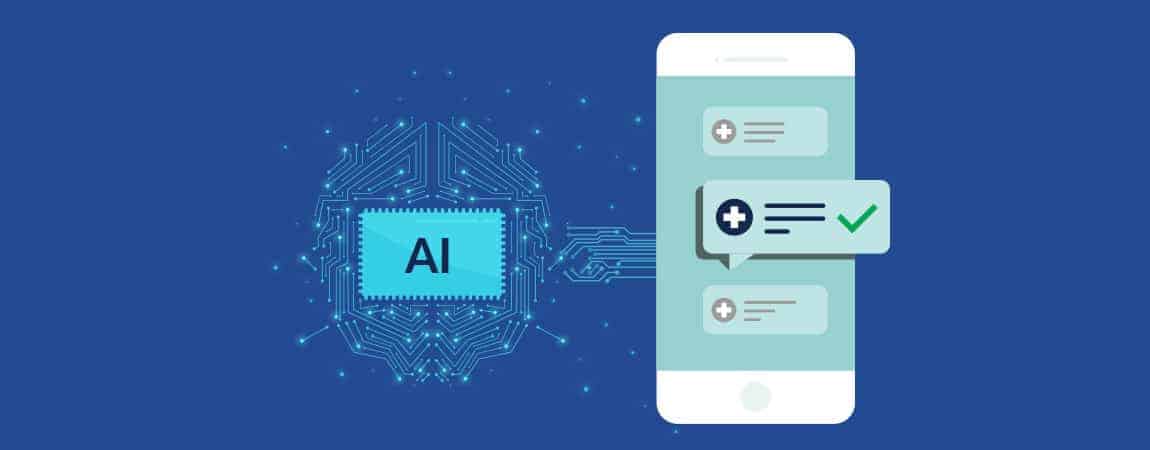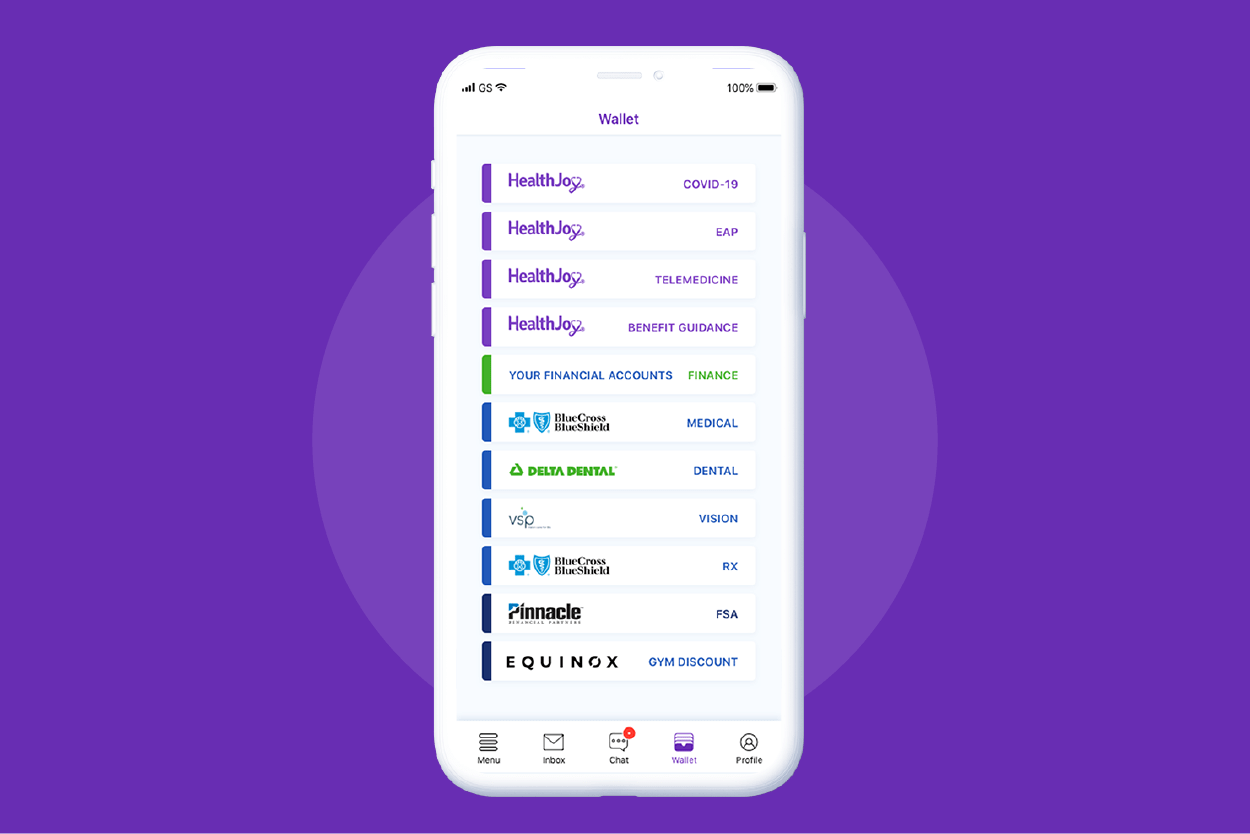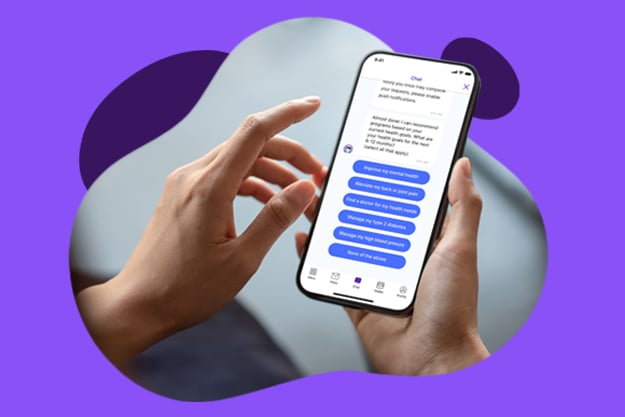How the HealthJoy Benefits Wallet Works
Using benefits is notoriously difficult. It seems that no matter how much is shared during Open Enrollment, when it comes to actually remembering,...
Connected Navigation Platform
Guiding to high-value care
Behavioral Health
Foster a mentally healthy workplace
EAP
Supporting holistic wellbeing
Virtual MSK Care
Reimagining musculoskeletal care
Virtual Primary Care
Powered by smart navigation
Surgery Centers of Excellence
Best-in-class surgical outcomes
Virtual Urgent Care
Immediate care, any hour of the day
Chronic Care
A new approach to chronic care
Integrations
Flexible to any strategy

It’s no secret that artificial intelligence is reshaping the way we think about healthcare and reducing unnecessary waste from all corners of the industry.
There are endless possibilities for AI to improve healthcare, from quickly processing large patient data sets through machine learning to Google’s AR microscope detecting a cancer cell that would otherwise go unseen by the human eye. Perhaps a more unexpected application of AI is found in healthcare guidance platforms– a tool created to help employees navigate their health benefits.
When you add AI to the equation of employee benefits, healthcare guidance goes from a passive service that just “exists” to active engagement that proactively reaches out to patients. Comparing the two systems side-by-side reveals just how powerful AI can be in a healthcare guidance setting.
Traditional healthcare guidance platforms offer a phone-based service that subscribers rarely utilize. Many phone-based advocacy programs and nurse lines claim to lower costs by giving employees a hotline to call whenever they have a medical issue, but this reactive approach is futile because few people remember the service exists. HR may briefly mention the service during the yearly benefits meeting, but it is soon forgotten. In order to achieve industry-leading cost containment in modern times, a guidance platform must perform consistent outreach and reminders to lead users to smarter healthcare decisions. Sitting back and waiting for users to call will result in close to zero change and a total lack of ROI.
The top reason that many healthcare guidance platforms fail to perform outbound engagement is cost. Having workers reaching out to members in real-time is expensive: the average general call center employee costs a minimum of $1 per minute of service, and healthcare-specific call center employees will cost at least double that amount. It’s, therefore, no surprise that traditional healthcare guidance platforms have opted for cheaper phone services with little to no outreach. The services that do offer proactive outreach may do so only for members with especially high utilization rates—the people that spend the top 1-2% on the service— but that’s it.
As public health research has found in recent decades, it is inefficient and costly to treat medical conditions and provide care in a reactionary manner. The current shift towards preventive medicine as a solution for a healthier and more financially stable population has rendered these traditional guidance platforms obsolete. The care they provide is too little, too late.
Now, the story of healthcare guidance is changing with AI. Newly automated processes enable modern guidance platforms to reach a scale and cost-efficiency beyond anything the industry has ever seen. AI creates two game-changing advantages: faster service and proactive outreach. Our AI-powered virtual assistant JOY is able to handle over 80% of our inbound requests and 95% of our outbound chats. This frees up our healthcare concierges to complete higher-level tasks rather than spend time collecting basic information. In addition, AI makes it possible to consistently and inexpensively perform outreach at scale.
AI-powered technology makes the lives of our healthcare concierges easier by assisting them in the response-writing process. HealthJoy’s “Concierge Care Center,” our custom CRM, is programmed to provide real-time recommendations that enable concierges to craft responses to member inquiries at a much quicker pace. All this saved time then enables them to focus their attention on the tasks that require human judgment, such as researching low-cost, high-quality facilities, answering benefits questions, resolving claims issues, and scheduling appointments for users.
Another situation where AI can dramatically simplify a human task is in eligibility file management. In the benefits world, the administrative burden of paperwork puts a significant drag on any HR system. Eligibility files, which are documents that contain employee personal/contact information necessary to enroll them in a benefit plan, are at the center of this issue. Since enrollment usually needs to be done across several company’s benefit platforms, formatting errors and typos make the process tedious and frustrating. Benefits administrators must spend precious time shuffling through pages and pages of documentation in order to find one typo so that the system will accept the files.
Once again, a winning solution is found through powerful AI technology. Instead of us wasting human capital on cleaning up eligibility files, processes like “fuzzy matching” enable several documents containing tiny discrepancies to be merged. Whereas traditional eligibility file management usually requires that each document contains exactly identical information in order to be joined together, fuzzy matching allows for a more lenient margin of a “close match”. Through this method, countless hours of tedious searching for typos are conserved.
Have you ever felt the pressure to constantly be taking initiative in your workplace or personal life? It can be exhausting. Lucky for us, AI cuts our healthcare concierges a break by automating the process of taking initiative in regards to our members’ care. HealthJoy’s virtual assistant is programmed to automatically review historic claims data and perform ongoing outreach where it sees opportunities for someone to be healthier. As long as a company provides access to this data, our AI-powered chatbot sends notices (known as Health Opportunities) to members when discovered. If a member wants to take action on a given Health Opportunity, they can easily chat with a concierge. Thus, we are only expending Concierge time when the member is motivated and ready to move forward.
Our AI assistant also initiates proactive outbound JOY campaign journeys with members to consistently remind them to take advantage of HealthJoy’s offerings and maintain their health. Whereas traditional employee benefits are typically ignored after open enrollment, our modernized platform is something you’ll constantly want to experience. The system sends friendly notifications, reminding you of all the ways it can help you make the most out of your benefits plan. For example, it will reach out to you about online doctor consultations, provider recommendations, and savings opportunities, all of which are just a few taps away on your smartphone. Read more in our post What Are HealthJoy’s JOY Campaign Journeys?
Today’s AI-powered healthcare guidance platforms will restore your hope in the healthcare system. No more waiting on hold for hours to fix an issue with your claims, schedule an appointment, or find information on your benefits. You can finally relax now that healthcare concierges and smart outreach systems, whose entire job is to make your healthcare experience simple and quick, have emerged as a solution to our wholly broken system.
What’s next for AI in health tech? At HealthJoy, we are currently using AI to further simplify tasks like digitizing your insurance card with JOY Vision. This program makes the onboarding process easy for new members. Simply taking a photo of an insurance membership ID converts the photo into a virtual card in the benefits wallet. In doing so, this function reduces human error, makes data entry less tedious, and contributes to our goal of making healthcare as easy as possible.
AI ushers in a new era of patient care and employee benefits, one where seeing the doctor doesn’t require scheduling an appointment weeks ahead of time and your benefits are easy to understand at last. Gone are the days when you had to wait on hold for hours before speaking with a human being—now, affordable and accessible care is available at your fingertips. All this goes to say, it’s time for humans to let AI take care of the tedious, time-consuming tasks in healthcare. We need to stop spending time seeking out spelling errors and start spending time seeking out the best providers the medical field has to offer.

Using benefits is notoriously difficult. It seems that no matter how much is shared during Open Enrollment, when it comes to actually remembering,...

For an employee, navigating the healthcare system is just a series of difficult decisions. With unclear pricing and confusing deductibles, it’s...

With so much conversation surrounding the broken U.S. healthcare system, we often overlook what this brokenness means for patients themselves....